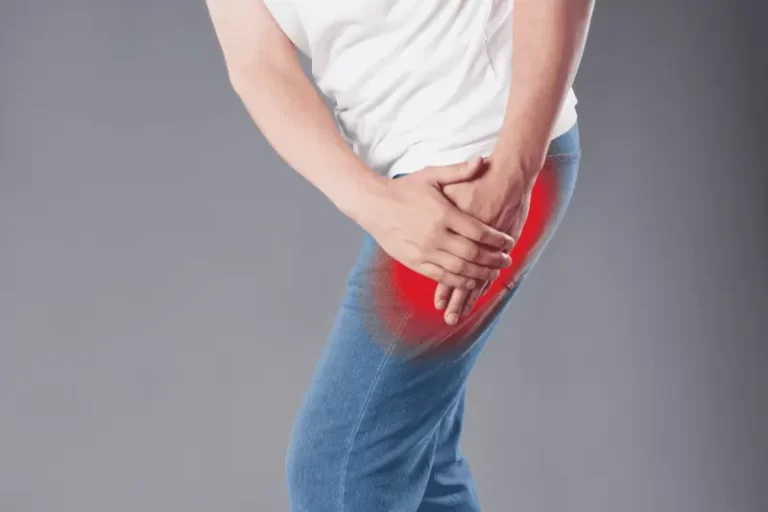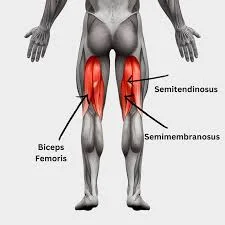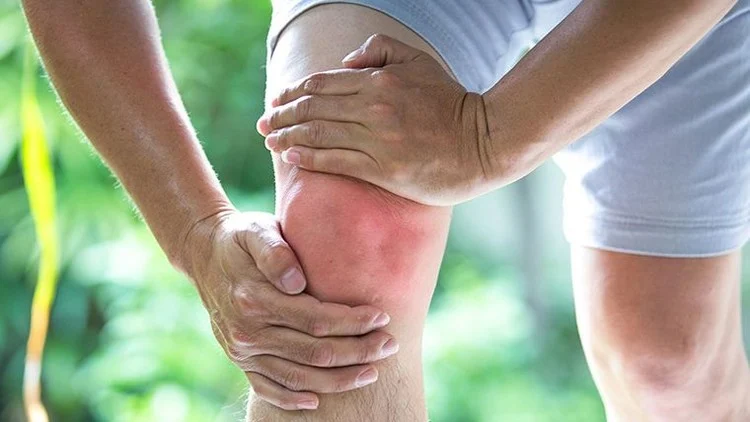Snapping Elbow Syndrome
What is a Snapping Elbow Syndrome?
Snapping elbow syndrome, also known as snapping tricep syndrome, is an uncommon disorder marked by a snapping sensation and symptoms associated with ulnar nerve irritation or subluxation at the cubital tunnel, as well as pain and inflammation caused by a dislocating tricep segment.
It is a dynamic phenomenon during elbow flexion or extension, with a snap in both active and passive movement. Physical exercises such as weightlifting and push-ups are frequently associated with increased symptoms.
Dislocation of the triceps tendon can occur across either the:
- Medial or lateral epicondyle.
However, it happens significantly more frequently than the medial one.
Snapping elbow syndrome appears at a mean age of 32 years (n = 30), ranging from 14 to 65 years, with a male to female ratio of 6.5:1.
Anatomy of the Elbow:
The triceps muscle is divided into three heads: lateral, long, and medial. In rare cases, a fourth, medial head has been identified. The three leads collaborate to produce a single tendon distally.
The lateral head emerges from three points on the humerus. The long head originates from the scapula’s infra glenoid tuberosity, whereas the medial head originates from the posterior humerus distal to the spiral groove.
The triceps attaches to both tendon and muscle. The tendinous segment that inserts into the olecranon is known as the appropriate portion. The expansion inserts into four locations: the posterior crest of the ulna medially, the fascia of the extensor carpi ulnaris origin laterally, the antebrachial fascia distally, and the anconeus insertion profoundly.
The location of the transition between the muscular and tendinous insertions of the medial head is significant in the snapping triceps because the distance between the medial border of the triceps muscle and the medial epicondyle decreases with a more distant transition. A little gap between the medial edge of the triceps and the medial epicondyle increases the risk of triceps snapping. This is a significant consideration during the clinical examination. Snapping Elbow Syndrome is also thought to be caused by an abnormal musculotendinous component of the triceps in the ulnar groove, as well as the fourth medial head of the triceps muscle itself.
The ulnar nerve is made up of nerve roots C8-T1. The ulnar nerve originates in the centre of the humerus and travels posterior to the intermuscular septum and anterior to the medial head of the triceps. The medial epicondyle and cubital tunnel retinaculum create the cubital tunnel at the elbow, where the nerve enters. The ulnar nerve runs from the medial border of the triceps to the medial epicondyle. An ulnar nerve dislocation can result in either a shallow groove or the absence of the cubital tunnel retinaculum.
What Are the Causes?
There are various possible reasons, some of which are listed below:
- Instability on the medial side of the elbow can be caused by a dislocation of the ulnar nerve or triceps tendons.
- Lateral ligament instability includes injuries to the annular ligament, meniscus, and synovial plica.
What are the signs and symptoms of Snapping Elbow Syndrome?
Snapping the triceps elbow frequently results in apparent symptoms that mirror a range of other elbow disorders.
Some of the symptoms are listed below:
- The most visible symptom is a cracking or popping sound and sensation while moving the elbow joint. It can occur when you bend or extend your elbow.
- Snapping the triceps elbow can result in pain on the inside of the elbow, which can vary in severity. The soreness is often localised to the inside of the elbow, where the ulnar nerve travels.
- Numbness or pins and needles in the ring and little fingers. This occurs because ulnar nerve snapping or subluxation can cause temporary nerve compression or pain.
- Individuals may detect weakness or a lack of grip strength in certain conditions. This might be because nerve compression impairs the function of muscles innervated by the ulnar nerve.
- Inflammation around the ulnar nerve can result in swelling, pain, or redness on the inside of the elbow.
Is Elbow Snapping Painful?
Yes. Popping of the elbow is relatively uncommon and may be caused by cavitation, which occurs when microscopic gas bubbles accumulate at the joint and release upon movement.
However, if you are experiencing pain and discomfort, you may have a snapping elbow, and we recommend seeing an orthopedic professional to receive a proper diagnosis and treatment.
A Snapping Elbow Syndrome: How Is It Diagnosed?
Given the unknown nature of Snapping Elbow Syndrome, the required assessment may involve one or more of the following:
Physical examination and medical history: Tell your physician about any activities that might have resulted in an injury, such as trauma, exercise, or sports. A physical examination, such as the elbow flexion test, can also be used to determine the severity of damage in the affected region.
Arthroscopy is the process of putting a tiny camera into the elbow joint to assess the state of the affected joint.
Magnetic resonance imaging, dynamic ultrasound, and even computed tomography can be used to assist diagnose Snapping Elbow Syndrome. Magnetic resonance imaging might be done in both extension and flexion if possible. In certain cases, it may show inflammation of the triceps’ medial head or oedema of the medial epicondyle. Ultrasound is often more accessible, and its dynamic capabilities are beyond magnetic resonance imaging. It is better to carry out the ultrasonic examination while aggressively stretching against resistance.
Treatment For Snapping Elbow Syndrome:
Snapping Elbow Syndrome is normally treated with a mix of conservative methods and, in extreme situations, surgery. Initial management may include:
Rest and activity modification: Avoiding activities that cause symptoms and providing appropriate rest for the elbow will help minimise pain and facilitate healing.
An elbow brace, splint, or sling would be recommended to allow the affected region to recover and relax. To maximise your chances of healing, you should also discontinue all activities and rest completely.
Physical treatment may include triceps muscle strengthening, stretching, and range of motion exercises to enhance muscle balance and stability around the elbow joint.
Nonsteroidal anti-inflammatory medicines (NSAIDs): OTC medications such as ibuprofen or naproxen can help relieve pain and inflammation.
Non-Surgical Treatment:
Physiotherapy Treatment:
- Increase joint mobility
- Reduces muscular tightness
- Soft tissue mobilization
- Joint mobilization
- Instrument-assisted soft tissue mobilization (IASTM)
Stretching stiff muscles:
Triceps Stretch
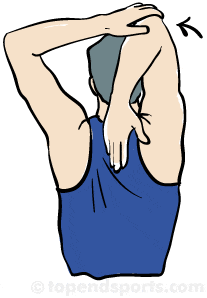
Lift your arm and fully bend your elbow, as long as the action is painless. You should feel a stretch at the back of your upper arm. Use your other hand to maintain this stance. Hold for 30 seconds and repeat 2-3 times. 2-3xday.
Strengthen your muscles:
Wrist raise, palm up.

Grip a lightweight object, such as a small dumbbell, bend the elbow at a straight angle, stretch the hand outwards, palm up, bend the wrist up towards the body, and hold for 5 seconds before gently releasing. Do two additional sets of 10 repetitions.
Improve your range of motion:
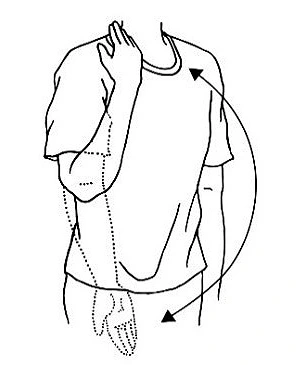
Flexion involves bending the elbow without utilising the opposing hand.
Hold for three seconds. It utilises ten times more. Three times every day.
Extension: Straighten your elbow without using the opposing hand.
Hold for three seconds. It utilises ten times more. Three times every day.
Ultrasound, electrical stimulation, heat or cold treatment, or laser therapy can all help to reduce pain and inflammation while also promoting tissue repair.
Surgical treatment:
Arthroscopic surgery: Elbow arthroscopy is commonly performed to treat this condition. Surgical options include anterior transposition of the ulnar nerve, tissue resection, and loosening of capsule tissues.
Post-operative Treatment:
You must remove the sling as soon as possible after surgery to move your elbow. Bend and straighten your elbow as much as possible, then hold it for 10 seconds. Repeat this 10 times every day (100 reps).
You can begin by twisting your forearm so that your palm faces the ceiling, then the other way so that your palm faces the floor, while maintaining your elbow securely by your side. These are referred to as pronation and supination exercises. However, do not push this movement with the opposite hand or if you experience pain until 4 weeks following surgery.
At this time, please refrain from lifting anything heavier than a cup of tea.
Early mobility is critical to avoiding stiffening your elbow or reducing any pre-existing stiffness as quickly as feasible.
Although early movement may be difficult or painful, you must attempt to move it.
You should be out of the sling within the next three days and completely by the end of the first week following surgery.
At 4 weeks after surgery, you can start passive supination and pronation exercises, as well as strengthening exercises, with your therapist.
Summary
Triceps snapping is a rather uncommon illness. Recognising Snapping Elbow Syndrome requires an awareness of the condition’s signs and symptoms. The patient will complain of painful snapping or, in rare circumstances, just ulnar nerve sensations. There is very little available data on this condition. Although a clinical evaluation will determine the diagnosis and subsequent treatment plan, dynamic ultrasonography is likely the fastest and least costly imaging method for accurately documenting a snapping triceps. When determining the cause of a snapping triceps, it is important to rule out ulnar neuropathy, medial epicondylitis, and distal tricep rupture.
A conservative treatment strategy of three to six months is recommended. This should include anti-inflammatory drugs and a stop of any activities that induce snapping. If conservative treatments fail, surgery is the best option. The snapping portion of the medial triceps is removed during surgery. Surgery gives satisfactory to excellent results in well-chosen individuals.
Snapping triceps should be included in the differential diagnosis of medial elbow pain, especially if ulnar nerve dislocation is present or suspected.
FAQs
Can Snapping Elbow Syndrome Be Prevented?
While certain causes of Snapping Elbow Syndrome cannot be avoided, there are a few precautions you may take to lessen the likelihood or severity of symptoms. These include maintaining excellent muscular strength and flexibility around the elbow joint, using optimal ergonomics and body mechanics when doing activities, and avoiding repeated or excessive stress on the elbow.
Is Snapping Elbow Syndrome a severe condition?
Snapping Elbow Syndrome is often a mild illness that may be treated conservatively. However, if the snapping is accompanied by extreme pain, joint locking, or difficulties moving your arm, you should seek medical assistance since this may suggest a more serious problem.
What are the treatments for Snapping Elbow Syndrome?
Snapping Elbow Syndrome is treated based on the underlying reason. Rest, activity moderation, ice, nonsteroidal anti-inflammatory medications (NSAIDs), and physical therapy are common conservative treatments for muscle imbalances and improving joint stability. A splint or brace might be advised. If conservative therapy fails to relieve symptoms or if there is a structural issue, surgery may be necessary.
Why do my elbows snap?
If you frequently bend your elbow, like while lifting weights, a popping, clicking, or grinding sound may suggest that your muscles are stiff and require more stretching. Sometimes, the sound is caused by tendons sliding over the bone, which can be relieved by correct stretching.
How do you check for snapping elbow syndrome?
Diagnostic tools. Ultrasound is the preferred instrument because of its dynamic nature and ability to differentiate between a breaking triceps tendon and an ulnar nerve. Dynamic MRI may also be used to reveal dislocation, although on a normal MRI, the elbow must be flexed for dislocation to be visible.
Is elbow cracking serious?
But don’t worry yet! Elbow popping and locking are surprisingly typical symptoms that we’ve all experienced at some point. Occasional, mild popping and clicking are often unnoticeable. However, if you are also experiencing pain, this might indicate an elbow injury.
What if you snap your elbow?
The elbow is a collection of bones that link the humerus (upper arm) to the ulna and radius (forearm bones). The ulna includes the olecranon, sometimes known as the “tip of the elbow”. A fracture in any of these bones can cause excruciating pain and severely limit your ability to move your arm.
Referances
- Snapping elbow. (n.d.). https://www.artisanorthopaedics.sg/conditions/elbow/snapping-elbow
- Sutariya, H. (2023, July 4). Snapping triceps syndrome – Cause, symptoms, treatment. Samarpan Physiotherapy Clinic. https://samarpanphysioclinic.com/snapping-triceps-syndrome/



